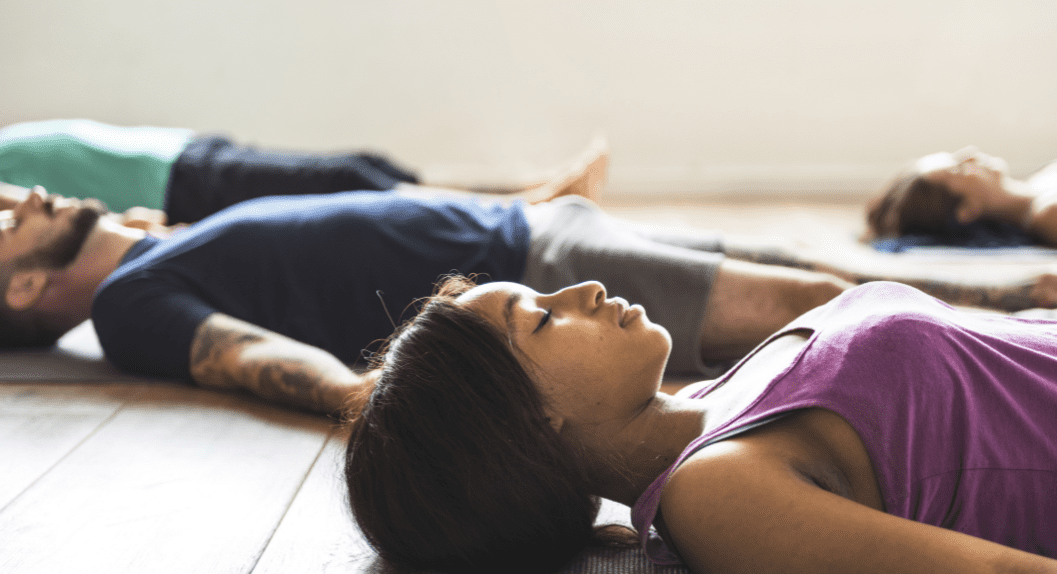Yoga asanas are not exercises. The word “exercise” tends to give the idea of a practice done with quick movement and a measure of strain involved. “Asana” simply means posture. According to Maharishi Patanjali Bhagavan, the definition of a posture or pose means one that gives steadiness and comfort. And so, the Yoga asanas should be practiced with the utmost ease and comfort.
Symptoms of old age, such as wrinkles and poor complexion, are caused by poor circulation of the blood, thus leaving numerous toxins and other waste matter in various parts of the body. Once the blood circulation is enriched, however, this foreign matter is washed out and eliminated, giving the body a younger look and feel.
As the Yoga asanas and yogic breathing are practiced, increasing the vitality of the body, there will follow a considerable decrease in harmful acts such as smoking and drinking. Many, many Yoga practitioners have told me that, surprisingly enough to them, they had unconsciously lost the desire to smoke and drink. For that reason, I have never asked any of my students to give up habits such as the above-mentioned, nor have I used a “don’t –do-this,” “don’t-do-that” method of training. To expect a student to get rid of his harmful habits before even starting Yoga practice would be like a doctor asking his patients to cure themselves of their ailments before receiving his treatment. Yoga is a cure-all of illness, whether mental or physical. As one takes to it, the ailments begin to disappear.
There is no better health tonic than Yoga asanas, and, as everyone will agree, nothing is possible in this world without good health. You can have neither Bhoga (enjoyment) nor Yoga (oneness with God) when you have Roga (ailment). But, when you enjoy radiant health, you can lead either a vyavaharic (worldly) life or boldly enter upon the nivriti marga (renunciate path). Without good health you can expect only a cheerless existence and cannot even entertain thoughts of serving or renouncing the world.The asanas are effective not only in the prevention of disease but in aiding the cure of existing disease as well. From prince to peasant, child to granny, ailing to robust, all can practice these Yoga poses with the maximum advantage.
The 72,000 Nadis
What are the symptoms of good health? They include real hunger; good digestion; sound sleep; perfect functioning of the various organs of the body; proper pulsation; limited temperature; timely elimination of feces, urine, and perspiration (within proper limits); interest in doing one’s duties; happiness of the mind; etc.
All these functions are properly controlled by a natural vital energy within the body, operating through the multivarious fine and subtle nerves which are spoken of by the ancient Yogis. They say there are 72,000 subtle nerves or nadis in the body, all originating in the spinal column.
The gross nervous system operates in the physical body and the subtle nervous system (nadis) in the astral body. There are subtle nadi centers in the astral body that correspond to the physical nerve centers or plexuses, and these are known as Adhara Chakras in the yogic terminology. The main chakras are muladhara, swadistana, anahata, vishuddhi, ajna, and sahasrara. The three most important nadis are the ida, the pingala, and the sushumna, which function throughout the length of the spinal cord. The sushumna functions only when the subtle, tremendous energy called Kundalini, or the “Serpent Power,” is aroused and ascends through it. At this time, when the Kundalini rises through the different chakras and reaches the highest one—the sahasrara, or “thousand-petaled lotus”—the practitioner enjoys the bliss of Samadhi. The
Endocrine Glands
Aside from the nerve centers, the endocrine glands also play a very important role in preserving the harmonious functioning of the body. These glands produce the very necessary secretions known as hormones, which benefit you both physiologically and psychologically. There are the pineal, pituitary, thyroid, parathyroids, thymus, adrenals, and gonads. Albert Einstein said of them, “Even our destiny is decided by the endocrine glands.”
These glands are stimulated not only by your physical movements, but by your thoughts as well. An evil thought or a fit of anger disturbs your physical harmony by causing the glands to produce irregular secretions. So you should always take care of your thoughts, making sure to invite only virtuous ones into the mind. The Yoga asanas and pranayamas serve to keep these endocrine glands in perfect balance and healthy condition.
Prana is the subtle power at the basis of life. The vibration of prana causes the mind to think. When this vibration is irregular, as is usual in the normal person, thought is also haphazard. Conversely, when the vibration is regular, there is calm within. Prana is the energy of the mind, the Commander-in-Chief of the vast army of minute cells which make up the body. When the prana is regular, the cells work in unison, resulting in harmony throughout the entire system. This all-important regulation of prana occurs through the regular practice of Yoga asanas and pranayama. Thus, these, along with other yogic practices, benefit us not only physically, but mentally and spiritually, too.
I have been asked such questions as, “We may get health through Yoga asanas practice, but what about strength?” The answer is: Through these practices you get the normal strength which everyone needs, and, apart from physical strength, you get the real mental strength as well, which you need even more than bodily strength.
Those who wish to develop muscular strength and get well-formed biceps and triceps can supplement Yoga practice with other forms of exercise but, they should never forget that health is much more important than muscular strength. One might be able to lift heavy weights, run long distances, jump to extreme heights, break chains, swim for miles, even stop automobiles, but is he or she immune to illness? Even great mental ability—being able to solve involved mathematical problems—comes second to health. Having phenomenal powers of memory is of no use without a balanced mind, one that can accurately weigh pain and pleasure, praise and censure, one that is fearless, residing in permanent peace and bliss.
That person with health and strength of physique, mind, morality, and spirit is the real gem among mankind and possesses the true treasure. It is my sincere wish and prayer that all of you possess such a treasure through the practice of Yoga and that you enjoy supreme peace, prosperity, and yogic bliss. Health is your birthright, not disease; strength your heritage, not weakness; courage, not fear; bliss, not sorrow; peace, not restlessness; knowledge, not ignorance. May you attain this birthright, this divine heritage, to shine as fully developed Yogis, radiating joy, peace, and knowledge everywhere.
(from the February, 2001 IYTA Newsletter)



